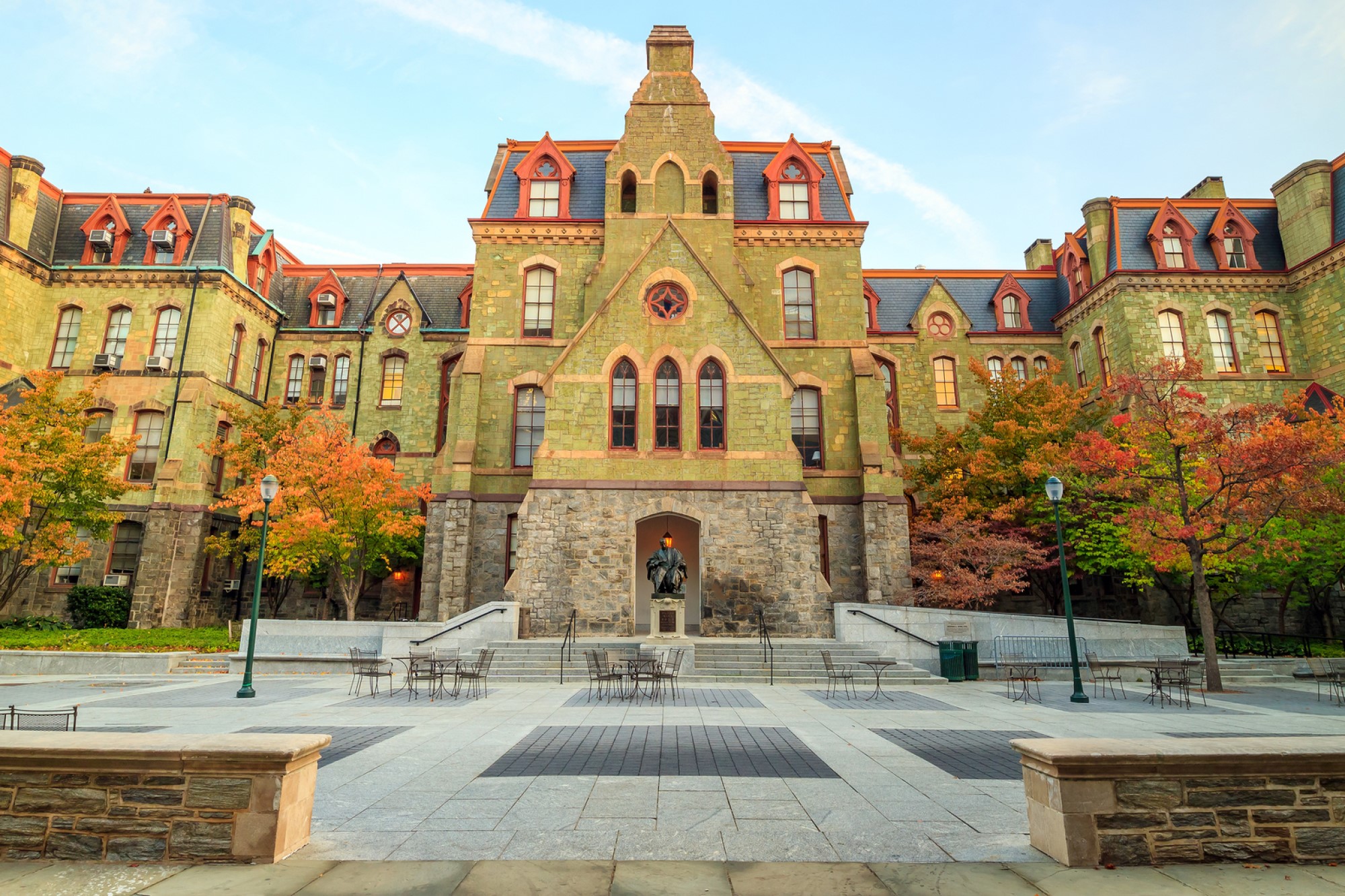Is Students for Fair Admissions Good Constitutional Law?

Last month’s Supreme Court decision invalidating the affirmative action programs used by Harvard University and the University of North Carolina to make undergraduate admissions decisions has, of course, generated a great deal of commentary – so much, indeed, that it easy to lose sight of two important issues: first, what were the arguments by which the Court arrived at its conclusion, and second, whether those arguments are any good in constitutional terms. As it turns out, both issues are more complicated than one might have thought based on the bite-sized encapsulations the media tends to provide.
Given that even the dissenting opinion in Students for Fair Admissions, Inc. v. President and Fellows of Harvard College, written by Justice Sonya Sotomayor, accuses the Court of “upend[ing] the status quo based on their policy preferences about what race in America should be like,” it is worth asking at the outset whether the Court’s arguments even merit close examination. Are they not, as the Court’s opponents tend to believe, mere post hoc rationalizations for imposing the policy preferences of the Court’s conservative wing? This complaint rings somewhat hollow coming from critics who generally countenance a place for judicial value judgments in constitutional jurisprudence; and in any case, it is mostly irrelevant. Whatever the Justices’ policy preferences or value judgments, they recognize that they are constrained to furnish public justifications for their decisions in terms of the doctrines and canons of judicial reasoning that constitute the tradition of American constitutional thought. Even if the public justifications are post hoc, they – and not the Justices’ policy preferences or value judgments – are what the public sees, and what judges and lawyers must rely upon, and ultimately the Court’s decisions stand or fall with them.
The Court’s argument that Harvard’s and UNC’s race-conscious policies are unconstitutional is simple in outline: the Equal Protection Clause of the Fourteenth Amendment prohibits racial discrimination by the states unless it is narrowly tailored to further a compelling government interest (this test is known as “strict scrutiny”); the colleges’ policies are racial discrimination, thus subject to strict scrutiny; they do not further a compelling government interest and are not narrowly tailored; therefore, they are unconstitutional.
No one disputes the argument’s first premise – that the Equal Protection Clause prohibits racial discrimination unless it passes the strict scrutiny test. This actually turns out to be important, because it means that everyone agrees racial discrimination by the states could be permissible. One need not read the Clause this way: it says simply that no state shall “deny to any person . . . the equal protection of the laws.” This categorical-sounding language could be interpreted as imposing an absolute ban on racial discrimination. The Court has chosen not to interpret it as an unqualified ban, and instead has allowed racial discrimination in a number of contexts – for example, segregating prison inmates by race to prevent imminent, serious harm from a race riot. And that means that the Court must consider whether the state’s interest is sufficiently compelling to justify racial discrimination.
It is less clear whether everyone on the Court agrees that Harvard’s and UNC’s affirmative action programs are racial discrimination in the sense that triggers strict scrutiny. Although Justice Sotomayor’s dissenting opinion purports to show why they pass strict scrutiny, thus implying that they are racial discrimination subject to this test, this may be because Justice Sotomayor chose not to contest the Court’s practice, which goes back to the first affirmative action cases, of analyzing affirmative action programs as if they were a form of racial discrimination. Indeed, in a way this question of whether affirmative action programs are racial discrimination gets to the heart of the disagreement between the majority and dissenting opinions, which concerns the meaning of the Equal Protection Clause itself.
For the majority, the Clause stands for the proposition that the Constitution “should not permit any distinctions of law based on race or color.” In other words, for the majority the Constitution presumptively forbids any law, policy, or regulation that classifies people by race and distributes benefits and burdens on that basis, on the theory that such classifications are inherently arbitrary and unjust. Thus, the Court approvingly quotes Brown v. Board of Education (1954) as saying that segregation in public schools would be wrongful “even though the physical facilities and other ‘tangible’ factors may be equal” – the “mere act of separating” is bad enough. The remedy is that the law should be formally colorblind.
By contrast, the dissenting opinion presents a view of equal protection that is less formalistic and more functionalist. According to this view, equal protection aims to eliminate racial “caste” systems, which are partly maintained through the state’s treatment of racial minorities in ways “denoting ‘inferiority as to their status in the community.’” On this view, racial classifications may only become problematic when they function to perpetuate or express the racial values of the caste system. Assuming that affirmative action programs do not do this, it might be argued that they do not even count as racial discrimination, and so are not subject to strict scrutiny at all. Again, the dissenting opinions do not go quite this far, but it is an implication that follows logically from their interpretation.
Who is right here? It is important to recognize that to be “right” in this context is not, at least in the first instance, a matter of moral judgment. Instead, it is about the proper interpretation of the Equal Protection Clause. In a sense, the issue is what ideal – the law as colorblind or as eliminating racial caste – was guiding those who drafted or ratified the Fourteenth Amendment, Congressmen who legislated during and just after it was passed, and others who might have insight into how it was understood at that time. The dissenting opinion can, and does, point to numerous examples of contemporaneous laws passed by Congress, such as the law creating the Freedman’s Bureau, as evidence that equal protection was thought to be fully compatible with color-consciousness. But that evidence is only so persuasive, given that these laws were largely addressed to ex-slaves, not Blacks as such; and more importantly, both sides agree that the Constitution’s bar on racial discrimination is merely (though strongly) presumptive. In other words, since the majority concedes that some racial discrimination passes strict scrutiny, the obvious reply is that, for example, the law creating the Freedman’s Bureau was racial discrimination and was perhaps understood as such, but it was thought to be necessary to meet the compelling needs of newly-freed slaves. Since no one in 1868 talked about these issues using terms like “strict scrutiny,” “race conscious,” or “colorblindness,” and since Congress was addressing a set of issues very different from those we now confront, it is difficult to be sure whether the congressional proponents of apparently race conscious laws saw them as justified racial discrimination or not racial discrimination at all. That is a somewhat fine distinction for your average Congressman.
In any case, as I mentioned, the Court’s opinion presumes that affirmative action is racial discrimination subject to strict scrutiny, and the dissent does not strongly contest that claim. So, let us consider why the Court held that affirmative action fails strict scrutiny. Its principal argument is that in order to justify racial discrimination, the government’s interest, or the goal it is trying to achieve, must be sufficiently “coherent” and “measurable” to be “subjected to meaningful judicial review”; and racial discrimination must be necessary to achieve the goal. According to the Court, the Harvard and UNC programs fail on both counts. Harvard identified the following educational benefits that its program helps facilitate: “training future leaders in the public and private sectors”; preparing graduates to “adapt to an increasingly pluralistic society”; “better educating its students through diversity”; and “producing new knowledge stemming from diverse outlooks.” Although the Court calls these aims “commendable,” it complains that “it is unclear how courts are supposed to measure any of these goals.” And even if they could be measured, the Court asks, “how is a court to know when they have been reached[?]” In addition, the Court questions whether assigning students to racial categories “furthers the educational benefits that the universities claim to pursue.” The Court’s point here, which is consistent with the racial skepticism evinced by a number of Justices during oral argument, is that racial categories are arbitrary and say relatively little about a person’s outlook or experience. Indeed, the Court also accuses Harvard and UNC of engaging in racial stereotyping, assuming that “[students] of a particular race, because of their race, think alike.”
On its face, these criticisms seem to have some merit. In the context of the rest of the Court’s constitutional jurisprudence, however, it is difficult to resist Justice Sotomayor’s claim that the Court here “moves the goalposts” of strict scrutiny in order to arrive at its preferred conclusion. Prima facie, the Court should consider the diversity goals of affirmative action programs sufficiently concrete to be compelling because it has in the past, in Regents of the University of California v. Bakke (1978), Grutter v. Bollinger (2003), and Fisher v. University of Texas at Austin (2013). The Court also previously found the “plus factor” approach to affirmative action sufficiently well-connected to those goals. In other contexts, the Court has approved of such nebulous compelling interests as “protecting the integrity of the Medal of Honor,” “public confidence in the judiciary,” or “maintaining solemnity and decorum in the executive chamber.” The Court could reply that it seriously misapplied strict scrutiny in the past, although in its opinion it claims that it “never permitted” admissions programs like Harvard’s and UNC’s, without explaining in detail how the programs at issue in Bakke, Grutter, or Fisher were relevantly different (Justice Gorsuch’s concurrence is less cagey about the fact that SFFA overrules the earlier cases). It could also claim that the standards of concreteness or measurability are higher in the equal protection context because the Constitution so disfavors racial discrimination, but that, too, would represent a departure from the Court’s previous approach.
On the whole, the Court’s reasoning in SFFA is unconvincing. The Court plumps for a formalistic conception of the Equal Protection Clause that focuses on a particular means – racial classification – divorced from an appreciation of its substantive end. In a different world, the Court might have decided long ago that affirmative action programs do not even qualify as racial discrimination in the sense relevant to triggering strict scrutiny. Even if they do, the Court’s strict scrutiny analysis places high hurdles in front of affirmative action programs that the Court has not used in other contexts.
All of that said, no one can be surprised at the demise of affirmative action. Starting with Bakke, the Court has never shown much enthusiasm for it. First, it decided that strict scrutiny applies, which in any context imposes a tough burden on the government to justify the law under review. Second, it held that remedying the effects of past discrimination is not a compelling government interest because it is an “amorphous concept of injury that may be ageless in its reach into the past.” This forced institutions like Harvard to rely on the argument that affirmative action is necessary to achieve the educational benefits of a diverse student body, which is perhaps a less compelling rationale. Boxed in by these two moves, the defenders of affirmative action were always fighting uphill.




